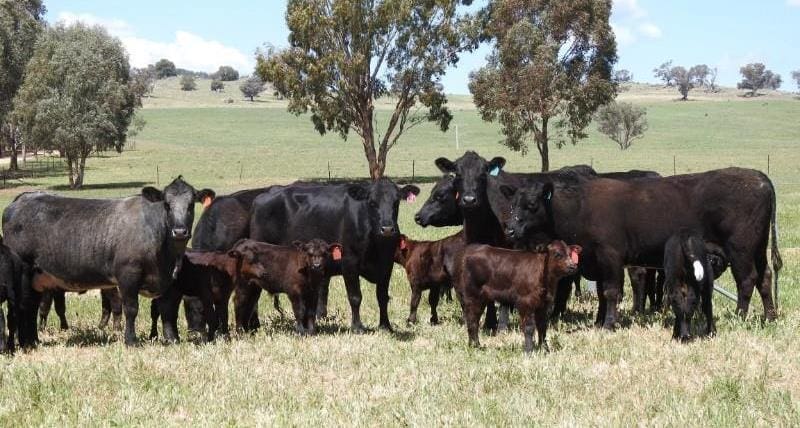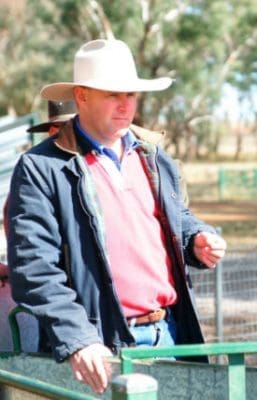
FOR many producers, birth weight is one of the major traits to consider when appraising new bulls. Without doubt, birth weight is the major influence on successful calving, with some research suggesting that birth weight is the cause of 60 percent of calving difficulties.
However, focusing solely on birth weight shouldn’t be seen as the solution to all calving difficulties. As with any trait, the influence of environmental factors such as nutrition pre-calving shouldn’t be overlooked.
Addressing issues within a herd requires a thorough and objective assessment of actual performance. Often poor calving rates are blamed on birth weights alone, when in reality there can be other issues at play. It becomes more difficult to address those issues if there are no base-line records for herd performance.
There is a rule of thumb that suggests that birth weight of a calf is about 7pc of the dam’s live weight. It’s a useful rule to consider, because as mature cow weights have increased over time, it is logical that birth weights will also increase.
To my mind, understanding mature cow size is important, particularly from a nutritional point of view, as larger cows require more feed to meet production targets. Often the cause of poor calving lies back at conception where cows weren’t cycling, or cycled late and failed to go into calf.
Where calves are born and there are indications of calving issues, it is just as important to consider pre-calving management, as it is to think about birth weight. Pre-calving nutrition is often done on ad-hoc basis. There are risks associated with both overfeeding and underfeeding prior to calving.
Overfeeding is often a risk, as this definitely contributes to heavier birth weights. However there are issues with excessive energy intake by the cow ahead of calving that include excessive fat deposition which can restrict the size of the birth canal and make delivery harder to achieve without assistance.
However the practice of restricting or underfeeding cattle can be equally risky. Cows need a reasonably degree of energy to ensure they can deliver a calf unassisted. Reduced energy intake leading up to calving does see losses from both metabolic disease and from physical weakness with cows simply unable to push a calf out.
As many drought-impacted producers have seen in the last two years, weaker cows also produce lower amounts of milk, which are often lower in colostrum levels. The combination is a weaker calf, suckling slower and less rich milk that can contribute to early losses at calving.
When nutrition is correctly managed pre-calving, it does allow scope for producers to record and analyse their calving issues. Again, while any producers focus on birth weight, there are other contributing factors to a successful birth. These include the age of the cow, her size and pelvic shape. These factors have a significant impact on successful calving. As such, for producers who do want to introduce their genetic traits associated with calving, birth weight shouldn’t be the only trait to consider.
Calving ease EBVs
The Calving Ease EBVs are designed to assist in making improvements in calving and address the other factors associated with calving in addition to birth weight. Calving ease (Direct) estimates the genetic differences in a sire’s calves being born unassisted from a two-year-old heifer. Many producers often skip over this EBV at selection, looking straight at birth weight EBVs. However this EBV can be extremely useful as a guide to help n addition to using Birth Weight EBVs.
With many producers focusing primarily on Birth Weight as a primary trait, there is a risk that they will potentially be selecting for animals that have lower growth later in life.
There are strong genetic correlations that exist between all weight traits. This helps to explain why birth weight EBVs rise when an animal is found to have good growth.
In terms of practical selection, it’s worth looking again at the goals that are in place for a program. It is possible to address genetically improve calving and maintain or improve growth traits within a herd.
So while there is a genetic antagonism between birth weight and growth rates, the correlation between direct calving ease and growth rates is not as severe. In basic terms, placing more emphasis on positive direct calving ease EBVs rather on birth weight is likely to have less impact on growth traits.
As always the way these traits are expressed will depend on environmental conditions. Focussing on single traits often results in herd performance becoming skewed in less desirable ways, that were often unintended.
It is worth considering the pre-joining and pre-calving nutrition as much as focussing on genetic traits for fertility.

Alastair Rayner
Alastair Rayner is the Principal of RaynerAg, an agricultural advisory service based in NSW. He regularly attends bull sales to support client purchases and undertakes pre sale selections and classifications. He can be contacted here or through his website www.raynerag.com.au
